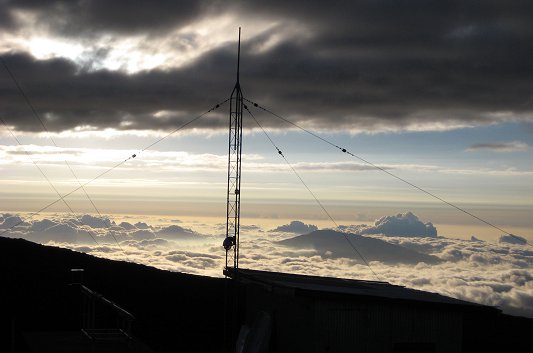
NOAA: atmospheric carbon passes ‘400 ppm’ for the first time since records began

14 May 2013
The concentration of carbon dioxide in the atmosphere measured at the Mauna Loa observatory in Hawaii has passed the 400 parts per million (ppm) threshold for the first time since records began in 1958, according to the US National Oceanic and Atmospheric Administration (NOAA) late last week.
A report on the NOAA website describes Mauna Loa as “the oldest continuous carbon dioxide (CO2) measurement station in the world [and] the primary global benchmark”.
Both NOAA and the Scripps Institution of Oceanography in California monitored CO2 building to the 400 ppm mark over the course of the week.
NOAA says the rate of CO2 increase grew after measurements started more than half a century ago, from about 0.7 ppm a year in the late 1950s to 2.1 ppm over the past decade.
‘Acceleration’
“That increase is not a surprise to scientists,” said Pieter Tans, a scientist with the Global Monitoring Division of NOAA’s Earth System Research Laboratory in Boulder, Colorado.
“The evidence is conclusive that the strong growth of global CO2 emissions from the burning of coal, oil, and natural gas is driving the acceleration.”
Before the Industrial Revolution, global average atmospheric CO2 was about 280 ppm, says NOAA.
“During the last 800,000 years, CO2 fluctuated between about 180 ppm during ice ages and 280 ppm during interglacial warm periods,” it adds.
“Today’s rate of increase is more than 100 times faster than…when the last ice age ended.”
The question of how long CO2 will linger in the atmosphere is also of key importance, according to Dr Maarten van Aalst, Director of the Red Cross Red Crescent Climate Centre and a Coordinating Lead Author of the Intergovernmental Panel on Climate Change (IPCC).
Climate risks
“Like everything to do with the carbon cycle – of atmospheric absorption and release of CO2 – it’s highly complex,” says Dr Van Aalst.
“At the very least,” he adds, “much of the CO2 already emitted stays around for decades, with climate changes rolling on beyond that. So we know we’ll be dealing with continued changes that we need factor into our work.”
“In addition, some of the CO2 emitted today, albeit a smaller proportion, will stay around far longer.”
In 2011 the IFRC reaffirmed its call to governments and civil society to better prepare populations after the IPCC issued a special report (“SREX”) linking climate change to extreme-weather events and rising risks of climate-related disasters such as heatwaves, floods and droughts.
The IFRC’s Strategy 2020 recognizes that “our understanding of the extent and impact of climate change will continue to evolve” and highlights its ambition to address both adaptation and mitigation.
A handbook on Early Warning, Early Action has been developed as part of the Red Cross Red Crescent answer to a future of growing uncertainty and rising climate risks.
Sunset at the Mauna Loa observatory, described as the oldest continuous carbon dioxide measurement station in the world, providing a global benchmark.
(File photo: Eric Johnson/NOAA)